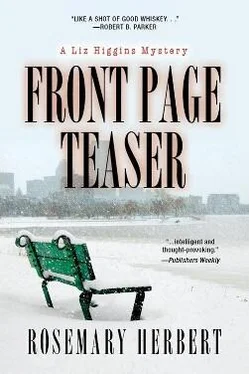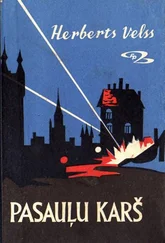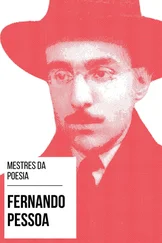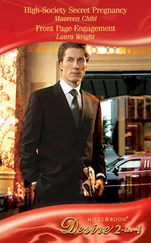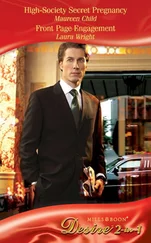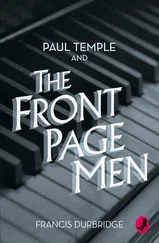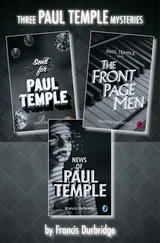“Like what, Sue?”
“Well, there are genetic tests, of course, to prove whose blood it is. But you can also tell if the person was anemic, for instance.”
“I’m on my way to meet a forensics man now.”
“Cool!”
With Sue’s help, Liz cleared boulder-like hunks of snow that had been pushed and compacted by the plow and then she backed the Tracer onto Summit Street. With Sue in the passenger seat, she rode the brake down the hill and turned toward Brighton Center. Now the snow was coming down so hard that the lights of Saint Elizabeth’s Hospital seemed veiled. Sue pointed out a parking lot and urged Liz to let her out there to avoid struggling along the sloping hospital driveway. Located next to a police station, the parking lot across the street from the Green Briar seemed to have priority on plowing. It was cleared of snow for the moment at least. Liz parked there and crossed the street to the bar, full of doubt that Kinnaird would show up.
The Green Briar’s unremarkable exterior offered little hint of the atmosphere within. And the latter arose less from the décor than from the sound of some thirty musicians who filled the place with traditional Irish music. Liz passed through a barroom to a brick-walled room hung here and there with photos of Irish scenes. Under a weathered pub sign from Dublin, the players were clustered around a large table. It was difficult at first for Liz to tell whether it was the fiddler or the pennywhistle player who served as leader here, but it was clear that the rest of the musicians were taking their cues from one or both of them. It was immediately obvious that the more confident players were seated closest to this pair while those who sat farther from this inner circle included some who seemed to lean in toward their instruments while playing lightly on them, as if they were trying to learn the music by ear.
The players were remarkably mixed. Septuagenarians and teens, working men and yuppies, ruddy-faced Irish-Americans, and a twenty-something Asian Indian all lost themselves in the music that went on and on, gaining momentum and spirit along the way. Liz marveled to think this world existed a few miles from Gravesend Street without her having enjoyed it until now.
She scanned the group more than once before picking out Dr. Kinnaird. He was sitting behind a man who was playing an instrument Liz had never seen before, which required squeezing a bagpipe-type inflated bag repeatedly with his elbow. There was no doubt the unusual instrument was enough to distract Liz’s attention. But there were other reasons she did not recognize Kinnaird at first. He was dressed far more casually than he’d been during his bite-marks presentation. Along with his suit, tie, and cuff links, he’d left behind his know-it-all demeanor. The expression on his face as he bent over his banjo was positively boyish.
Liz noticed he was seated far from the leader. Here, he was not the top of the heap. And he didn’t seem to care.
The tune went on and on. To Liz’s untutored ear, it was repetitious, but highly pleasing. While the musicians played on, she took off her coat, and removed from its pocket the crumpled front page she had taken from the Banner newsroom. The “PINCH OF BLOOD” headline played on Dick Manning’s report of his conversation with Medical Examiner Barney Williams: “‘The distribution of the blood over the countertop and baking ingredients, but not on the floor or elsewhere, suggests the scene was manipulated,’ Williams said. ‘One has to wonder if the blood was sprinkled there intentionally, rather than spilled as the result of an injury.’”
As Liz read, the Irish tune came to an end and Kinnaird noticed Liz. He set his banjo down on his chair and joined her.
“So you braved the storm?” he said.
“I’m so glad I did. This is terrific.”
“You brought the photos, I suppose,” Kinnaird said, looking longingly at his banjo as the music started up again. “I know this tune.”
“Do you want to join in? I can wait,” Liz said, hoping he would not take her up on the offer. “Or you can let me buy you a beer. You’re my research assistant after all.”
“I wouldn’t hear of it. I’ll take care of it,” he said and ordered a lager for Liz and a tall glass of water for himself. “I usually don’t take alcohol until much later in the evening if I’m playing,” he explained.
No table was particularly well lit, so they chose one for privacy rather than illumination. Kinnaird’s lighthearted expression vanished as he looked over the prints. His eyes lingered over them for a long time.
“Most interesting,” he said. “Of course, without being privy to accurate measurements of the spaces between the blood droplets, the precise shape of them, and the chemistry of them, I can’t draw any detailed conclusions. But I can tell you what someone with that information should be able to glean from this scene.”
“Please do.”
“First, look at the big picture. There’s blood on the countertop and ingredients but apparently not on the floor.”
“Does that suggest the blood may have been intentionally sprinkled there?”
“Possibly. It would be odd for blood flowing from an injury sustained in a violent attack to confine itself to one surface area. That’s why it would be important to study the shape of the drops. If they fell straight down from a wound, they would be fairly circular with a spreading pattern around the perimeter of each. That doesn’t look to be the case from these photos. If they were strewn there, say, with someone’s fingers, they would likely lay out in an arched pattern like a sunrise, with no blood underneath a kind of horizon line,” Kinnaird said. He demonstrated by bringing his fingertips together, dipping them into his water, and opening his fingers quickly to fling water on the table.
“The problem at the Johanssons’ house is most of the blood drops have fallen into the sprinkles and shredded coconut. That seriously undercuts any conclusions about how the blood fell there.”
“If the blood did come from a wound, what kind of injury might account for it?”
“Impossible to say. Could be a facial wound. They flow freely and, given that the blood is confined to a rather high surface area, it would make sense for it to come from the upper body. The wound might have been stanched before the injured person crossed the floor. That would account for the lack of blood anywhere else. But I wouldn’t bet my life on that. The droplets here don’t scream ‘head wound’ to me. They’re small. The few I can make out on the countertop appear teardrop-shaped and too evenly distributed to suggest that.”
“What about the chemistry you mentioned? What might be learned from that?”
“The amount of drying would suggest how long the blood had been there. Analysis of the blood would reveal blood group, whether or not the person was anemic or suffered from certain diseases, and, of course, DNA analysis would pretty much nail the bleeder’s identity. If you had a sample to match it to.”
“Those are all things that show up in mystery novels these days, aren’t they?”
“I suppose so. Less often mentioned in mystery novels is luminol, a chemical that would be sprayed around such a scene to reveal traces of blood that someone tried to clean up. If and when the police release what they learn from that, the reporter whom they inform first will have a huge advantage.”
Across the room, the musicians had started up another tune.
“That’s a hornpipe. Do you hear the syncopation in it?” Kinnaird said, brightening measurably and looking longingly at his banjo. “If you’d like to stay on, you can pull up a chair over there. The musicians tend to sit as close together as they can, near the leader.”
Читать дальше
